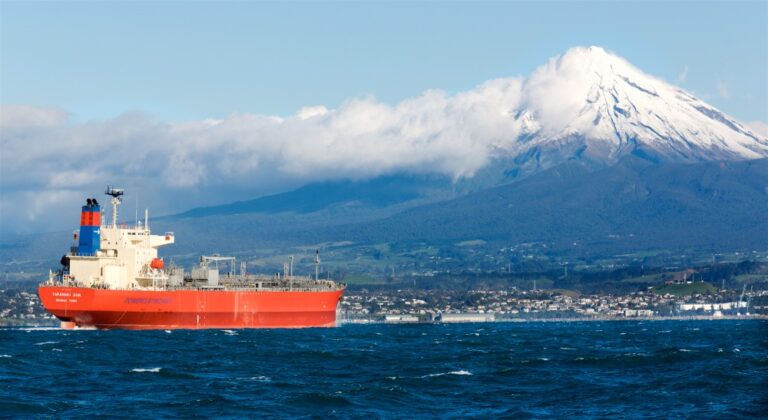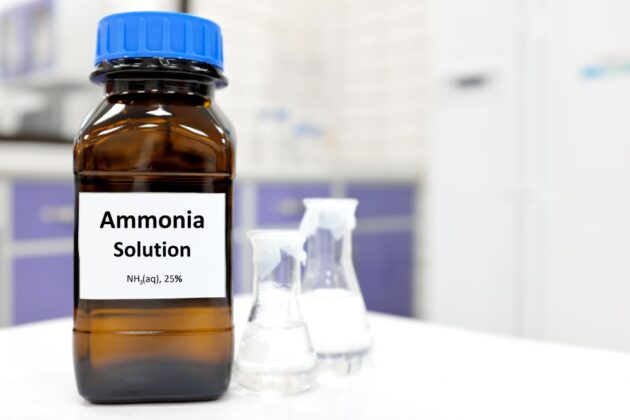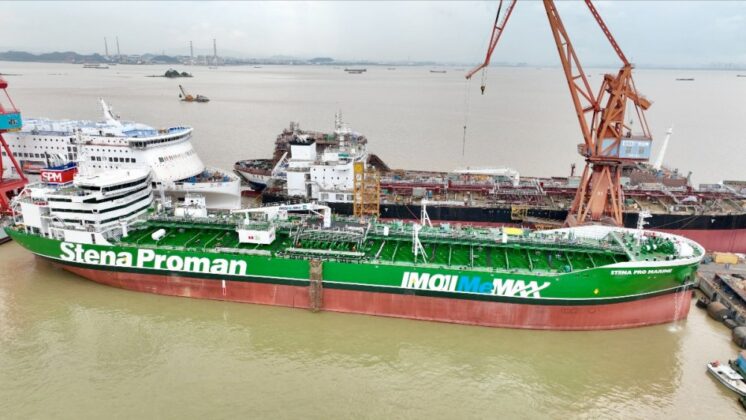In view of environmental regulation, shipowners are more than ever faced with the difficult decision for a fuel of the future. Various industry initiatives have compared different options like ammonia, methanol or LNG. One important aspect: safety
Within the framework of a three-day »Future Fuels Series« in Northern Germany around [ds_preview]200 participants in Hamburg, Leer und Harlingen recently discussed, which prerequisites must be fulfilled in order to be able to establish alternative fuels in a meaningful way. Amongst others, one result was, that in order to be able to select the »right« fuel, a basic prerequisite is to consider the entire life cycle of the energy source. In this context, pilot projects are needed along the value chain in order to exploit the best possible economic and ecological advantages.
For shipping companies, the choice between a »bouquet« of different fuels is a major difficulty. In addition to assessment principles, there is a need for more clarity and planning certainty in regulation. Currently, there are still some »open items« with regard to the design of the guidelines and ambiguity about how EU and IMO goals can be »reconciled«, reported Christian Allgeier from the Federal Ministry for Digital Affairs and Transport.
Technology is not the bottleneck
He described the complexity of the EU‘s »Fit for 55« package of measures, but also of the IMO regulations, which must be coordinated with 175 member states. Technology – according to the unanimous opinion of the speakers and the plenary – is not the »bottleneck«, but in particular the (OPEX) costs and availability of fuels. »The major energy turnaround will only succeed if we can commercially deploy a market-ready technology and make it accessible to a broad mass,« said Sebastian Ebbing of the German Shipowners‘ Association (VDR).
No one was able or willing to make a clear recommendation on the choice of fuel. At the moment, a large number of new ships are being ordered, but a big share of them are still equipped with conventional fuels, reported Jörg Larink of Briese Schifffahrt. »We lack the foundation for decisions,« says Larink.
There were workshop contributions on biofuels, methanol, synthetic LNG, ammonia and the use of OME (oxymethylene ether). The use of carbon capture and storage was also discussed.
The series of events was organised by the German Shipowners‘ Association (VDR), Koninklijke Vereniging van Nederlandse Reders (KVNR), FME and Mariko GmbH as part of the projects »Kompetenzzentrum Green Shipping Niedersachsen«, Green Shipping Waddenzee and H2Watt.
BV and TotalEnergies cooperate
Also, French classification society Bureau Veritas (BV) carried out a study aiming at de-risking the use of ammonia as a marine fuel, with a specific focus on leak mitigation and treatment, in collaboration with TotalEnergies.
Ammonia is one of the main zero-carbon fuel options currently envisioned by shipping as the industry seeks to decarbonise. Because it burns without emitting CO2 and is zero-carbon »well-to-wake« when produced from renewable energy, it is a top contender among potential alternative fuels. However, ammonia presents several safety challenges, which must be addressed before it can be used on board ships. The joint preliminary study has evaluated the health and safety risks from ammonia leaks for crew and passengers and pinpointed key safety criteria. So it has examined different leak scenarios for single-wall and double-wall containment, as well as during bunkering operations – also providing key insights on the efficiency of ventilation and vapor processing systems, the size of safety zones needed, and the health risks to people exposed to leaks.
More safety distance needed
Ammonia is toxic to humans, and exposure beyond certain levels and durations can have serious health consequences for crew members and other people onboard. For ship owners and designers, therefore, a key challenge is to prevent accidental ammonia leaks during ship operations and bunkering. To help de-risk ammonia as fuel, BV says it is building on a tried-and-tested approach that was used in the last decade to propel the development of LNG as fuel. The classification’s Rule Note NR 671 was also used as a guideline, given its focus on preventing ammonia leaks and requirements for onboard vapor processing systems.
As ammonia-powered engines and propulsion systems are still being developed, the partners began by assessing what concentrations of ammonia in the air would be problematic, and compared those levels to LNG. The LNG-fueled tanker served as the model for the comparison, showing a stark contrast between the two fuels. »LNG becomes dangerous at around 50,000 parts per million (ppm), while ammonia starts to have health effects above 30 ppm when permanently exposed, or around 300 ppm when exposed for one hour«, they said.
Based on this, BV noted that unless modifications are made to design, safety distances should be much greater for ammonia than LNG. This confirmed the approach outlined in BV’s NR 671, which includes more stringent leak management on-board and vapor gas processing to avoid even small leaks reaching manned areas.
Laurent Leblanc, Senior Vice President Technical & Operations at Bureau Veritas, commented: »While further experimentation and analysis are required to reach definitive conclusions, this preliminary study helped identify future areas to explore for de-risking ammonia as fuel. Additional tests could be performed for leak design scenarios, bunkering safety zones, bunkering arrangements, and the effect of weather conditions, for example.«
Until technology developments can eliminate ammonia leaks completely, he added, leak mitigation and treatment remain the best course of action for ship owners and designers.
»Methanol poses least overall risk«
In another initiative, »Together in Safety«, a non-regulatory shipping industry safety consortium, initiated the »Future Fuels Risk Assessment«, a cross-industry study with nine partners to evaluate potential operational risks of LNG, methanol, hydrogen and ammonia. The partner think, the industry must pro-actively develop standard safeguards and control measures for the deployment of future fuels.
The »Future Fuels Risk Assessment« study partners include APM Terminals, Carnival Corp, Chevron, Euronav, Lloyd’s Register, Maersk, MSC Ship Management, the Oil Companies International Marine Forum (OCIMF) and Shell. The collaborative study, which involved a series of hazard identification (HAZID) workshops across a set of operational scenarios based on a standard tanker design, found that of the four fuels reviewed, methanol poses the least overall risk, followed by LNG, hydrogen and ammonia.
The HAZID risk ratings of the fuels were assessed from a series of »What if« scenarios within four categories: navigation, external events, ship operations and bunkering.
Methanol scored the lowest risk ratings within navigation-related scenarios, such as loss of manoeuvrability, excessive motions or a black-out at sea, as well as in scenarios related to ship operations (other than bunkering), notably cargo operations in case of damage to equipment or vent mast and crew changes during vessel handovers. Methanol also scored the lowest – what the partner describe as »broadly acceptable« – risk ranking in the external event scenario of hull breach from ship collision. However, within bunkering scenarios, such as leaks or loss of containment, LNG and hydrogen held »broadly acceptable« risk scores.
LNG and hydrogen nearly identical
Both LNG and hydrogen scored nearly identical risk rankings in all scenarios studied by the HAZID team, with none falling within the »intolerable risk« domain. LNG fared better than hydrogen in one navigation scenario of vessel abandonment due to loss of tank pressure control, tank breach or loss of propulsion. »It should also be noted that there are well established international regulations for the use of LNG as fuel on board ships, whereas for hydrogen, no such regulations or guidance are available for either its usage as fuel or storage in the marine environment«, it was said. For the purpose of the study, the HAZID team only considered cryogenic liquid hydrogen.
Across all the fuels there are several medium risk ratings accepted as »tolerable«, but the study indicated that efforts must ensure that risks are reduced to »as low as reasonably practicable«.
Ammonia scored »broadly acceptable« risk as a potential source of ignition in the scenario of tug support or third-party vessel attendance at sea. However, some risks for ammonia as a fuel are classified as high (or »intolerable«) in navigation scenarios like grounding or collision leading to a hull breach, cargo operations in case of damage to equipment or vent mast, and leaks or loss of containment during bunkering.
Focus on seafarers
To bring these hazards down to medium or a low-risk ratings, the study offers recommendations for ammonia usage. These include safety equipment for seafarers if there is a risk of gas pocket formation; dedicated emergency training for crew on fuel system safety devices and mitigating damage to fuel system scenarios; and guidelines on fuel system designs that mitigate risks from grounding or collisions.
»Together in Safety« was established three years ago with the principal objective to protect seafarers’ lives, while delivering improved business efficiency and commercial effectiveness. Grahaeme Henderson, Chair of ’Together in Safety’ said: »As the shipping industry safety coalition, ›Together in Safety‹ represents a new approach with shipping industry groups, companies and service providers, working in collaboration by combining their collective knowledge and expertise on challenges for the benefit of all. This report is of significant importance to the industry and also individual companies who are making decisions on the future fuels, to understand the hazards and potential risk mitigations.«
Nick Brown, CEO, Lloyd’s Register said: »This report by ‘Together in Safety’ illustrates how detailed and holistic risk assessments can identify and focus attention on the solutions needed for the safe use of alternative fuels.«
Bud Darr, Executive Vice President, Maritime Policy at the leading container liner company and cruise ship operator MSC Group added: »Without the safety issues being thoroughly identified and properly addressed, we will not reach the end state we need. Safety and net zero GHG operations must go hand-in-hand in a world powered by future fuels at sea.« He said MSC will continue to work with the industry to further identify new ways to mitigate risk levels in zero carbon fuels through elimination, substitution, or control in future study projects.
Plea for methanol
In the meantime, the Methanol Institute further advocates for the namesake fuel option: »Methanol as a commercially and technically viable marine fuel is gaining greater traction over other alternative bunkers, including LNG, as more shipowners adopt the clean burning fuel as price spreads narrow and production ramps up«, it emphasizes.
Greg Dolan, CEO of the Institute, a trade body whose shipowner members include Maersk, Stena Bulk, MSC, MOL and Oldendorff Carriers, predicts that methanol production costs will fall to become more competitively priced than traditional diesel bunker and other alternative fuels. Dolan suggested that the move to methanol would also help shipowners avoid the proposed carbon tax on diesel.
»There’s a call by many including the world‘s largest shippers for a carbon tax on diesel fuels. That would dramatically change the pricing picture for marine fuels and the only available alternative fuel options today are advanced biofuels, LNG and methanol,« he said, adding that while LNG paved the way for methanol, methanol adoption can be a model for ammonia and hydrogen in the future.
According to Dolan, methanol production increased last year to 100 Mmt, doubling production in a decade. He said production could reach 500 Mmt by 2050, as predicted in a joint Methanol Institute/International Renewable Energy Agency report released earlier this year.
Commenting on those shipowners that have already announced plans to include methanol within their fuel pool, Dolan said that first movers, such as Maersk, understand »there is little time left to wait on potential solutions that might fulfil 100 % of their 2050 goals. They know we don‘t have 30 years to wait.«
»Availabe in 122 ports«
Maersk announced in March that its first methanol-burning vessel will launch in 2023, seven years ahead of schedule. Another advocate is Proman Stena Bulk. The joint venture between shipowner Stena Bulk and methanol producer Proman is planning to build six 50,000 dwt tankers with methanol dual-fuel engines for delivery in 2023. A further three vessels owned solely by Proman, scheduled for delivery in 2022 and 2023, will be traded globally for shipping chemicals and clean petroleum products. Anita Gajadhar, Managing Director Proman Marketing, Logistics and Shipping, said: »For us, methanol is a proven fuel capable of meeting the shipping industry’s carbon reduction targets. When you look at the long-term pricing, it is competitive when compared to alternatives, like MGO. It is easy to bunker, it is safe to bunker, and it is widely available as bunker in 122 ports.«
Cheaper than LNG newbuilds
Methanol-fuelled newbuilds also cost less than a LNG-burning ship, according to engine builders MAN Energy Solutions and Wärtsilä. Kjeld Aabo, Director New Technologies two-stroke promotion, MAN Energy Solutions, says that a 54,300 m3 capacity product tanker running a methanol-fuelled engine would add about 10 % to the newbuild price. The same vessel running on LNG would cost 22 % more than a conventional HFO-burning ship.
Finnish manufacturer Wärtsilä introduced a methanol engine in 2013. Toni Stojcevski, General Manager, Project Sales & Development, reveals that the engine builder expects to have an ammonia-fuelled engine operating next year and a pure hydrogen engine in 2025. The company also plans to launch a new methanol-burning engine based on its proven W32 series in late 2023. This will be available for newbuilds and retrofit. MM






















